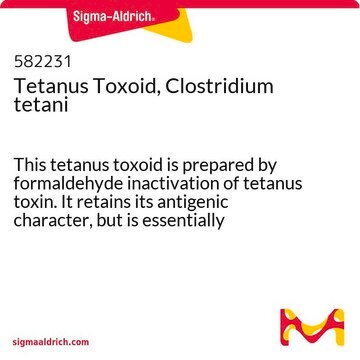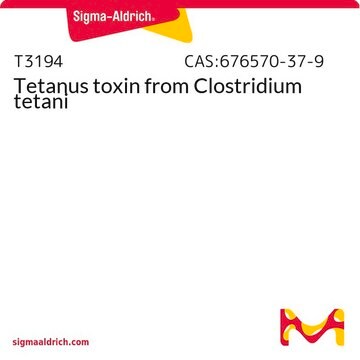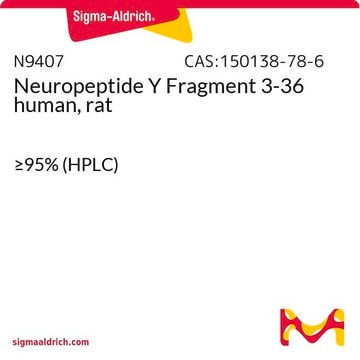T8024
Tetrodotoxin
≥98% (HPLC), powder
Sinónimos:
Fugu poison, Maculotoxin, TTX, Tarichatoxin
About This Item
Productos recomendados
Análisis
≥98% (HPLC)
formulario
powder
color
white
solubilidad
dilute citrate or acetate buffer: 1 mg/mL (dissolve at pH 4-5. Aqueous solutions, pH 4-5, are stable if stored frozen.)
strong acid or alkaline solutions: unstable (destroyed by boiling at pH 2.)
temp. de almacenamiento
2-8°C
cadena SMILES
[H][C@]12OC3(O)OC(C4[C@@H](O)NC(=N)NC4([C@@H]1O)[C@@H]3O)[C@@]2(O)CO
InChI
1S/C11H17N3O8/c12-8-13-6(17)2-4-9(19,1-15)5-3(16)10(2,14-8)7(18)11(20,21-4)22-5/h2-7,15-20H,1H2,(H3,12,13,14)/t2?,3-,4?,5+,6-,7+,9+,10?,11?/m1/s1
Clave InChI
CFMYXEVWODSLAX-IXUBDLNJSA-N
Información sobre el gen
rat ... Scnn1g(24768)
¿Está buscando productos similares? Visita Guía de comparación de productos
Aplicación
Acciones bioquímicas o fisiológicas
Nota de preparación
Palabra de señalización
Danger
Frases de peligro
Consejos de prudencia
Clasificaciones de peligro
Acute Tox. 1 Oral
Código de clase de almacenamiento
6.1B - Non-combustible acute toxic Cat. 1 and 2 / very toxic hazardous materials
Clase de riesgo para el agua (WGK)
WGK 3
Equipo de protección personal
Eyeshields, Faceshields, Gloves, type P3 (EN 143) respirator cartridges
Certificados de análisis (COA)
Busque Certificados de análisis (COA) introduciendo el número de lote del producto. Los números de lote se encuentran en la etiqueta del producto después de las palabras «Lot» o «Batch»
¿Ya tiene este producto?
Encuentre la documentación para los productos que ha comprado recientemente en la Biblioteca de documentos.
Los clientes también vieron
Nuestro equipo de científicos tiene experiencia en todas las áreas de investigación: Ciencias de la vida, Ciencia de los materiales, Síntesis química, Cromatografía, Analítica y muchas otras.
Póngase en contacto con el Servicio técnico










